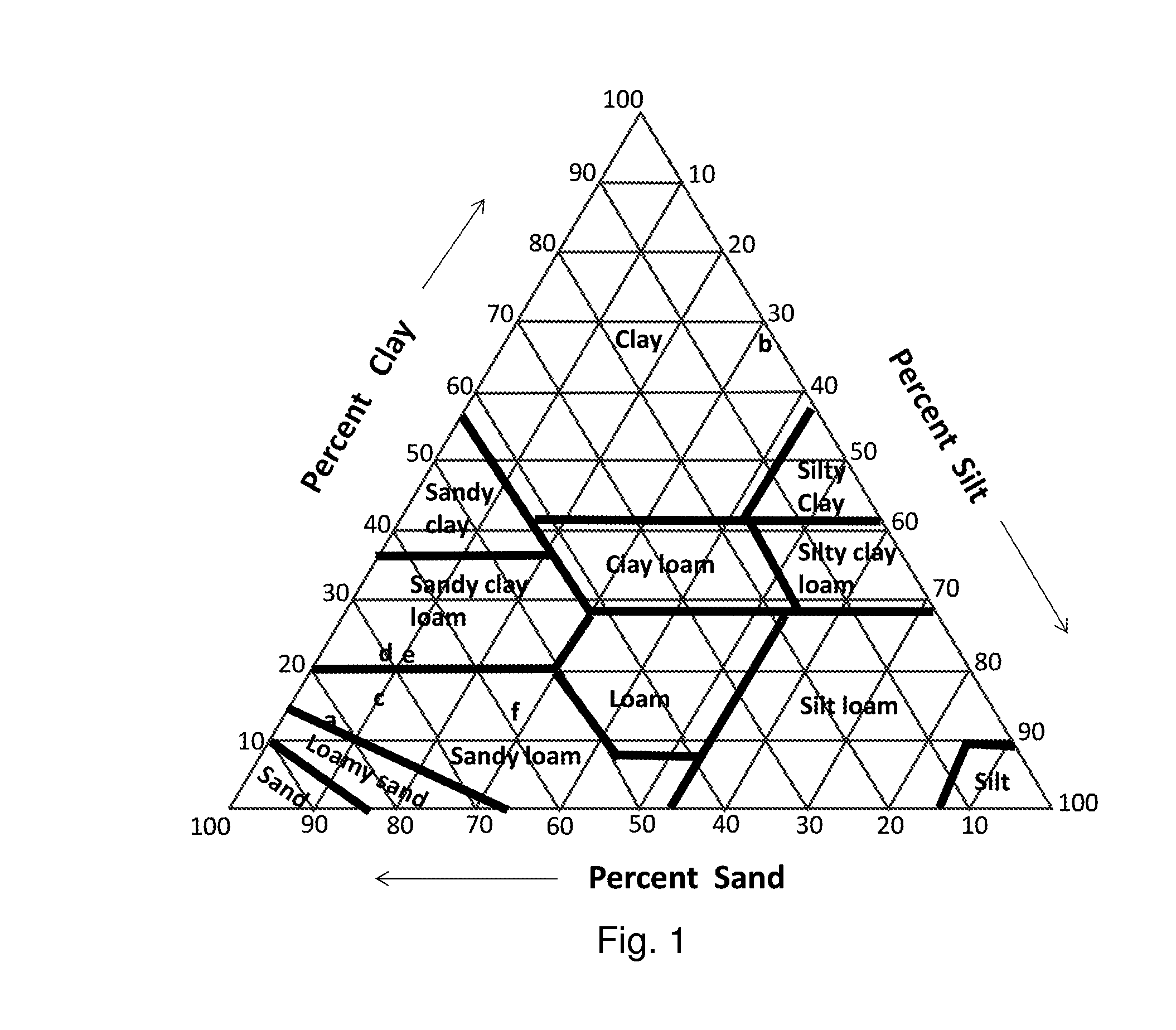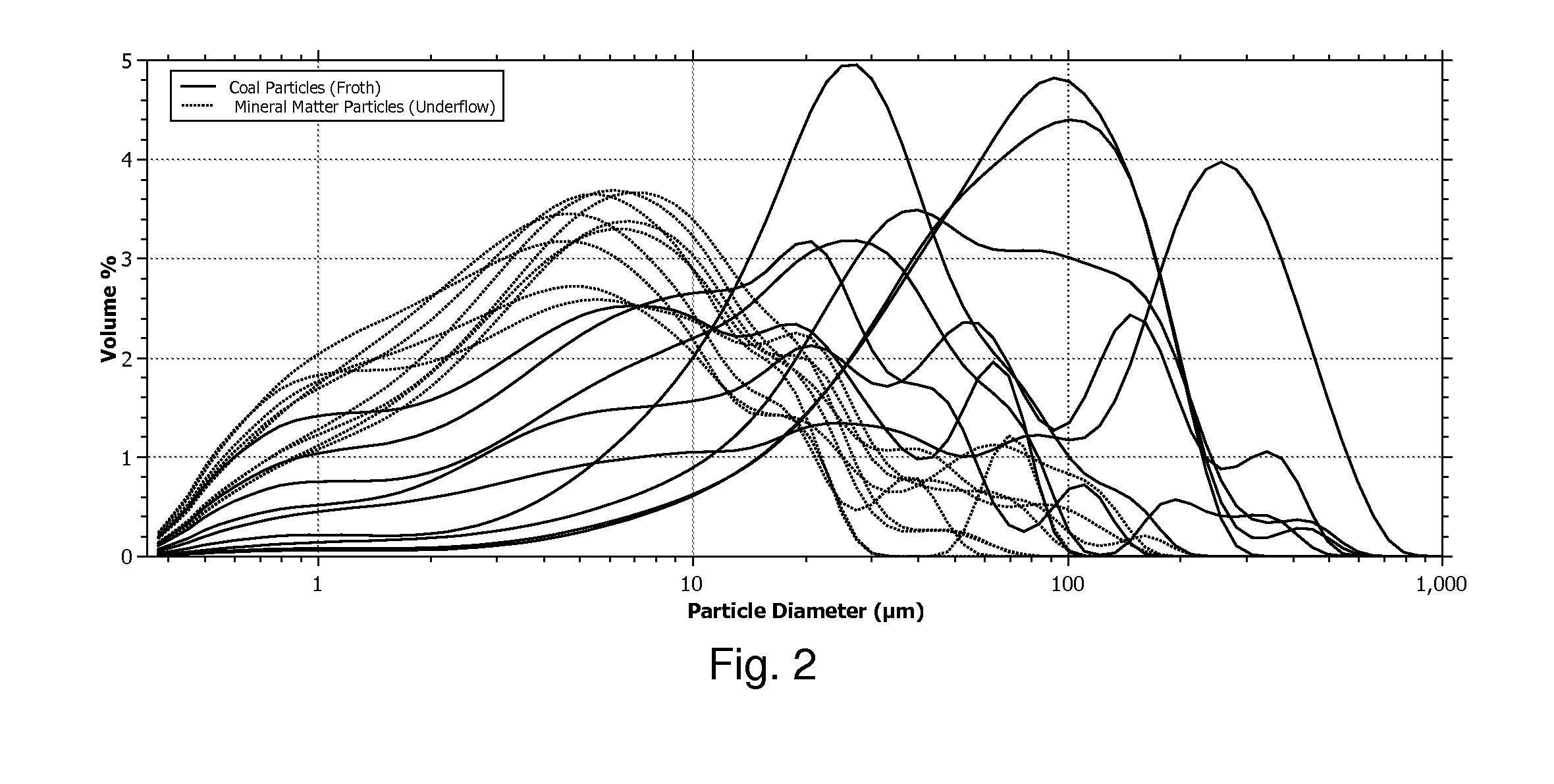Coal-derived mineral matter as a soil amendment
a technology of mineral matter and soil amendment, which is applied in the direction of potassium fertiliser, calcareous fertiliser, application, etc., can solve the problems of large loss of silt and clay, large loss of topsoil, and rapid degradation of topsoil around the world
- Summary
- Abstract
- Description
- Claims
- Application Information
AI Technical Summary
Benefits of technology
Problems solved by technology
Method used
Image
Examples
example 1
[0022]FIG. 1 is a soil classification ternary diagram representing the relative content of clay, silt, and sand in soil. Loam is generally considered the ideal soil representing approximately equal amounts of sand and silt size with a lesser amount of clay. Table 1 below shows the texture of a sandy loam soil that, by definition, is missing significant amount of silt and clay particles. Coal-derived mineral matter sample C028 was blended in with the sandy loam soil to change the soil texture at loadings of 10%, 20%, and 30% by weight of coal-derived mineral matter. Additionally, because the coal-derived mineral matter sample C028 has a higher cation exchange capacity (CEC) than the sandy loam soil, CEC of the blends increased in comparison to the sandy loam soil. The cation exchange capacity measures the capacity of a soil to hold or store exchangeable cations such as potassium (K+), calcium (Ca++), magnesium (Mg++), and ammonium (NH4+). The observed increase in CEC ranged from 3.7 ...
example 2
Fine Mineral Matter Separated from Fine Coal as a Soil Texture Amendment
[0024]FIG. 2 is a graph comparing the typical particle size distribution of the floated coal-froth containing discrete coal particles and about 5% by weight discrete mineral matter particles on a dry basis with the tailings or underflow separated from the coal-froth in the flotation separation process containing fine particles of the coal-derived mineral matter with about 10% to 15% by weight discrete, oxidized coal particles on a dry basis. Even though the main particle size peak for the coal-froth particles changed (ranging between 30 and 250 μm, depending on the source of the coal feedstock that was used in the flotation separation process, the froth particles (coal particles) were always larger than the underflow particles (coal-derived mineral matter particles). As the amount of discrete coal particles increases in a tailings or underflow sample, the small peaks around 50 to 100 μm also grow. In other words...
example 3
Nutrients in the Mineral Matter Particles
[0027]Elements must be present and available in soils for healthy plants to grow in the soil. If a nutrient is not present in the soil, it cannot be included in the plant. The fertilizer industry is based on establishing nutrient levels for high yield plant growth.
[0028]Sixteen nutrients are essential for plant growth. They are carbon, hydrogen, oxygen, nitrogen, phosphorus, potassium, sulfur, calcium, magnesium, iron, boron, manganese, copper, zinc, molybdenum, and chlorine. With the exception of carbon, hydrogen and oxygen, which are supplied by carbon dioxide and water, the nutrients must be dissolved in the soil solution of the topsoil to become accessible to the plant roots, particularly the root hairs where mineral adsorption primarily occurs. The topsoil acts as a reservoir of sorts from which essential plant nutrients are accessed. The concentration of some or all of these nutrients in soil is referred to herein as the nutrient concen...
PUM
 Login to View More
Login to View More Abstract
Description
Claims
Application Information
 Login to View More
Login to View More - R&D
- Intellectual Property
- Life Sciences
- Materials
- Tech Scout
- Unparalleled Data Quality
- Higher Quality Content
- 60% Fewer Hallucinations
Browse by: Latest US Patents, China's latest patents, Technical Efficacy Thesaurus, Application Domain, Technology Topic, Popular Technical Reports.
© 2025 PatSnap. All rights reserved.Legal|Privacy policy|Modern Slavery Act Transparency Statement|Sitemap|About US| Contact US: help@patsnap.com



